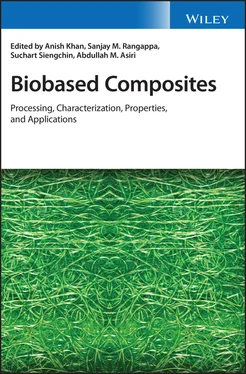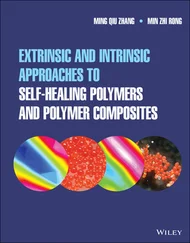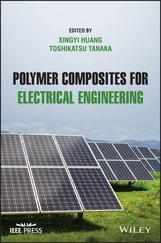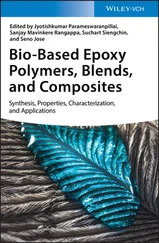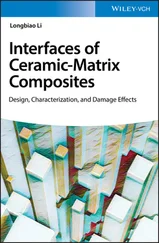| Fiber type |
Density (g/cm 3) |
Tensile strength (MPa) |
Tensile modulus (GPa) |
Elongation to break (%) |
Cost per weight (USD/kg) |
| Coir |
1.15–1.46 (1.31) |
95–230 (162.5) |
2.8–6 (4.4) |
15–51.4 (33.2) |
0.3 |
| Date palm |
0.9–1.2 (1.05) |
97–275 (186) |
2.5–12 (7.25) |
2.0–19 (10.5) |
0.02 |
| Jute |
1.3–1.49 (1.4) |
320–800 (560) |
8–78 (43) |
1–1.8 (1.4) |
0.3 |
| Hemp |
1.4–1.5 (1.45) |
270–900 (585) |
23.5–90 (56.75) |
1–3.5 (2.25) |
1.3 |
| Kenaf |
1.4 |
223–930 (576.5) |
14.5–53 (33.75) |
1.5–2.7 (2.1) |
0.5 |
| Oil palm |
0.7–1.55 (1.13) |
80–248 (164.0) |
0.5–3.2 (1.85) |
17–25 (21) |
0.3 |
On the other hand, an obvious lack of research regarding the evaluation and selection processes of the natural fiber composites (NFCs) is observed. More specifically, evaluating and selecting the proper agro waste natural fibers for the NFCs is not investigated comprehensively regarding the desired features [9]. Hence, more efforts to establish sufficient comparison criteria are required in order to precisely evaluate and select the appropriate fiber type for the biobased products. The overall characteristics and capabilities of the NFCs depend on the physical, mechanical, chemical, and economic features of the composites' constituents. Therefore, in order to exploit the benefits of these materials to the full extent, comprehensive investigations of the previously mentioned features have to be completed as a primary stage in any industrial application. New techniques have been developed by AL‐Oqla and Sapuan [20] for the assessment and selection of the composites. A wide range of valuable criteria has been discussed by AL‐Oqla and Sapuan [20] to demonstrate that natural fibers have a primary role in natural fiber reinforced polymer composites. Another technique to evaluate various raw fibers was presented by AL‐Oqla et al. [10], where six different types of natural fibers were considered in the evaluation process. These were coir, jute, hemp, kenaf, oil palm, as well as date palm. The physical, mechanical, and economic properties of these types were considered simultaneously. Informative values on the different properties of the considered fibers are listed in Table 1.2. They are obtained from literature based on experimental works, where the average values were adopted assuming that the data is uniformly distributed within the data range found in literature.
Table 1.3 Specific properties of the fibers.
| Fiber type |
Specific tensile strength (MPa)/(g/cm 3) |
Specific tensile modulus (GPa)/(g/cm 3) |
Specific elongation (%)/(g/cm 3) |
Cost ratio |
| Coir |
124.05 |
3.36 |
25.34 |
0.231 |
| Date palm |
177.14 |
6.90 |
10.00 |
0.015 |
| Jute |
400.00 |
30.71 |
1.00 |
0.231 |
| Hemp |
403.45 |
39.14 |
1.55 |
1 |
| Kenaf |
411.79 |
24.11 |
1.50 |
0.385 |
| Oil palm |
145.13 |
1.64 |
18.58 |
0.231 |
Table 1.4 Specific properties of the fibers with respect to the cost ratio.
| Fiber type |
Specific tensile strength (MPa)/(g/cm 3)/cost ratio |
Specific tensile modulus (GPa)/(g/cm 3)/cost ratio |
Specific elongation (%)/(g/cm 3)/cost ratio |
| Coir |
537.53 |
14.55 |
109.82 |
| Date palm |
11 514.29 |
448.81 |
650.00 |
| Jute |
1 733.33 |
133.10 |
4.33 |
| Hemp |
403.45 |
39.14 |
1.55 |
| Kenaf |
1 070.64 |
62.68 |
3.90 |
| Oil palm |
628.91 |
7.09 |
80.53 |
Hence, Table 1.3lists the specific properties for the fibers (the average values of each property divided by the average values of the density).
The obtained specific properties calculated in Table 1.3are further calculated with respect to the cost ratio as tabulated in Table 1.4.
It is believed that a comparison of the natural fibers using the combined physical, mechanical, and economic information would result in better evaluation of the available natural fibers and resources. It can be noticed here that the specific tensile strength to cost ratio for the date palm was five times that of jute. Therefore, combined evaluations would lead to better evaluation of fibers as it can be realized that date palm fiber is better than jute once specific properties to cost ratio evaluation criterion is considered.
1.6 Life‐cycle Assessment
The Life‐cycle assessment (LCA), as the name implies, is an assessment method of the environmental impacts along the whole life of the product, starting from preparing the raw materials, and passing through producing, distributing, using, maintaining, and ending by disposing or recycling. Designers use this method in evaluating their products. It can widen the view of the environmental concerns through compiling an inventory of relevant energy and material inputs and environmental releases; assessing the potential effects accompanying the identified inputs and outputs; and helping in adopting more realistic decisions. In general, the LCA used an iterative process to arrive at the results. These results provide further information to the production process and guide toward the most important environmental input or output that should be highly monitored. Several case studies for the environmental impacts of the life cycle of many products were reported in the literature [60–64]. All the studies conclude that the LCA is an effective tool to assess the environmental impacts of the different products along their life, as well as it aids in selecting ecofriendly materials. Hence, using LCA in planning and management strategies helps in delivering more sustainable products and protecting the health of the people. The extra information obtained from LCA can help in improving the inventory analysis, and in adopting more informative decisions. Further environmental improvements can be achieved using LCA through evaluating the potential effects accompanying specified inputs and outputs.
There are three types of LCA; these are: conceptual, simplified, and detailed. These types can be applied in many ways where each type has its own strengths and weaknesses. The life cycle of each product passes through many stages starting from extracting and preparing the raw materials, manufacturing, distributing, storing, using, and ending by disposing or recycling the products to reduce the environmental effect.
Recycling is defined as converting the materials and the products at the end of their life to new useful products. It exploits the potentially useful materials from waste, reduce the demands for raw materials, reduce the energy consumption, and reduce the air and water pollutions. Each stage of the LCA have inputs (raw materials and energy) and outputs (gas emissions and solid wastes). Thus, the role of the LCA is to study the environmental impacts of these inputs and outputs on each stage of the product life, and trying to reduce these impacts and deriving the potential benefits from them. The LCA is composed of four phases:
Goal and scope
The purpose of this study is to select a product and determine the objective of the study (comparison, improvement) and fix boundaries accordingly.
Inventory analysis
Читать дальше
